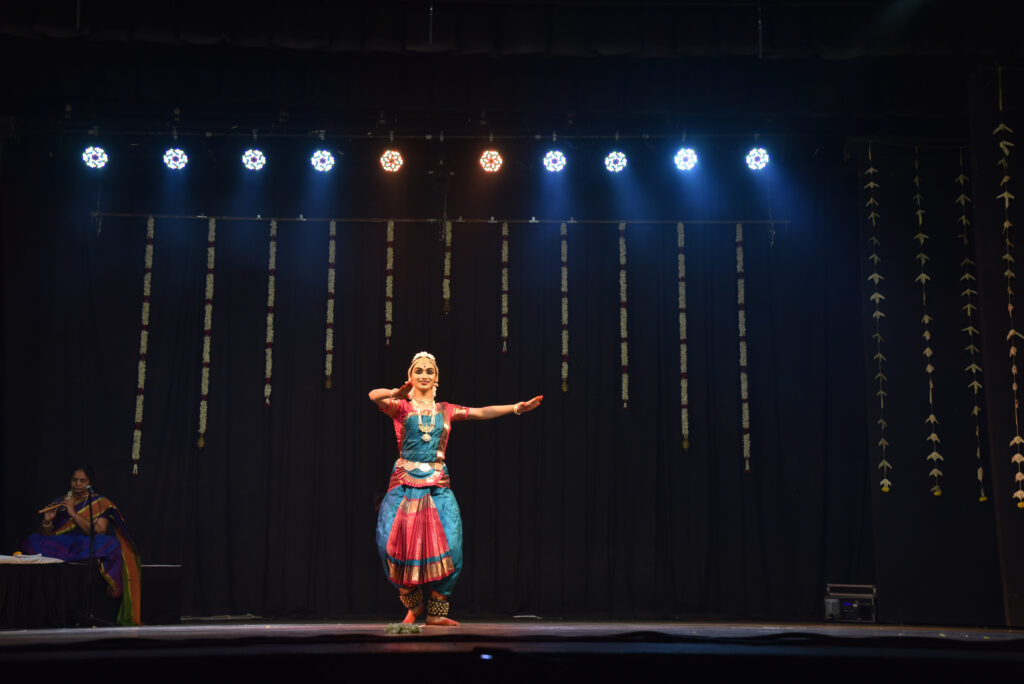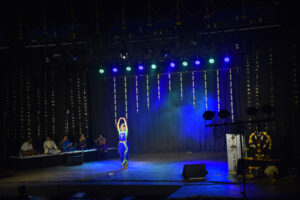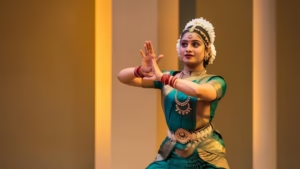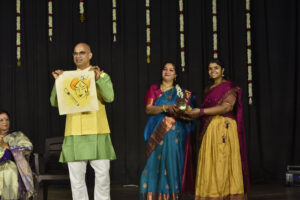In the world of Indian classical dance, few experiences compare to the excitement, intensity, and emotional depth that comes with preparing for a Rangapravesham . For a young dancer, this event marks the culmination of years of dedication, and the beginning of a lifelong journey with the art. While many associate Bharatanatyam with the term arangetram, in other classical dance forms like Kuchipudi or Odissi, the debut solo performance is known as Rangapravesham .
So, what does Rangapravesham actually encompass? The word combines two Sanskrit terms: “Ranga” meaning stage, and “Pravesha” meaning entry. Hence, Rangapravesham signifies the dancer’s formal entry onto the stage for a solo recital after rigorous training under a Guru. It’s both a personal and spiritual milestone.
This blog explores the entire process of Rangapravesham preparation—from the emotional rush of rehearsals to choosing the perfect invitation card for dance programme, and how this sacred moment shapes a performer for life.
1. Rite of Passage
The Rangapravesham is a deeply respected rite of passage in Indian classical dance. While it shares similarities with arangetram, it is essential to understand Rangapravesham vs Arangetram. Both terms describe a dancer’s first full solo performance, but the term arangetram is traditionally used in Bharatanatyam, while Rangapravesham is more prevalent in other classical forms like Kuchipudi.
Regardless of terminology, the essence remains the same: a dancer, after years of intense training, finally ascends the stage alone. It’s a moment of vulnerability and strength, filled with anticipation, pride, and reverence. The dancer is not just performing for an audience, but offering their art to the divine, to their Guru, and to the traditions that have been passed down through generations.
This sacred milestone is not only a performance but a declaration of readiness. The Rangapravesham is a spiritual offering where the dancer’s body becomes a temple, the stage becomes a sanctum, and every movement becomes a prayer.
2. Solo Performance
A Rangapravesham is not like any other stage show or group recital. It is a solo performance in every sense—technical, emotional, and spiritual. Months of preparation go into every single piece. Each movement must be crisp, each expression deeply felt, and each gesture refined.
The training leading up to the Rangapravesham is intense. Unlike group performances, where cues and formations provide some security, the solo stage demands complete self-reliance. The dancer must master their timing, memorize long compositions, and sustain high energy for the entire duration, often 2–3 hours.
But beyond the technical mastery lies something even more significant: the ability to communicate. In a Rangapravesham , the dancer must convey stories and emotions that resonate with the audience. Whether it’s the divine love of Radha and Krishna or the fierceness of Durga, each piece must be infused with soul.
This kind of solo performance teaches life skills—confidence, poise, presence, and grace under pressure. The experience of owning the stage during Rangapravesham becomes a metaphor for how one faces challenges in life: fully present, wholly committed, and deeply connected.
3. Traditional Repertoire
What makes a Rangapravesham dance performance so special is the rich and structured traditional repertoire. While each Guru may tailor the sequence to suit the dancer, a typical recital includes:
- Invocation (Pushpanjali or Ganapati Stuti): A prayer to the deity and Guru.
- Jatiswaram: A pure dance number showcasing rhythmic footwork and body control.
- Shabdam: A blend of rhythm and expression, often based on devotional themes.
- Varnam: The centerpiece of the recital, combining intricate movements and expressive storytelling.
- Padams & Javalis: Emotionally driven items portraying divine love, separation, or bhakti.
- Thillana: A lively, rhythmic finale filled with complex footwork and energetic movement.
- Mangalam: The concluding prayer for peace and gratitude.
Each piece in the Rangapravesham demands its own style, mood, and tempo. The dancer must shift seamlessly from one rasa (emotion) to another, keeping the audience engaged while honoring the spiritual depth of each composition.
The costumes, stage decor, and even the invitation card for dance programme often reflect the classical aesthetics, further immersing the audience in the cultural and artistic experience. The rangapravesam isn’t just a showcase—it’s an offering.
4. Guru’s Assessment
No Rangapravesham can happen without the blessing and assessment of the Guru. It is the Guru who decides when the student is ready—not just physically, but emotionally and mentally. The Guru looks for mastery in technique, clarity of movement, strength in footwork, and depth in abhinaya (expression).
One of the most beautiful aspects of the Rangapravesham tradition is this sacred teacher-student relationship. The Guru becomes more than a mentor—they are the guide, critic, motivator, and spiritual anchor. The dancer, in turn, expresses utmost gratitude and respect, especially on the day of the performance.
Often, dancers dedicate their Rangapravesham performance to their Guru through a formal on-stage acknowledgement. This emotional exchange is witnessed by the audience and stands as a testimony to the purity of the learning process.
The Guru also plays a critical role in designing the sequence of the program, training the dancer with the orchestra, and ensuring that the performance adheres to tradition while showcasing the unique strengths of the student.
5. Formal Ceremony
A Rangapravesham is never just a dance performance—it is a complete ceremony. It usually starts with a puja (ritual offering) or lamp-lighting ceremony, seeking blessings from the divine. Family, friends, fellow dancers, and senior artists are invited to witness the event.
Special attention is paid to the aesthetics of the event. The stage is decorated with traditional motifs, flowers, and lighting. The dancer wears a vibrant, custom-stitched costume, often in multiple colors for different sequences. The Rangapravesham look is completed with temple jewelry, fresh flowers, and symbolic makeup that enhances expressions.
The invitation card for dance programme is also curated with great care. It usually features the name of the dancer, Guru, details of the program, and symbolic art elements like Nataraja or dance mudras. The invitation sets the tone for what the audience can expect: a blend of tradition, talent, and transformation.
Live musicians are a vital part of the Rangapravesham dance performance. The chemistry between the dancer and orchestra adds a layer of spontaneity and emotional resonance. Each beat, melody, and pause is carefully aligned with the dancer’s movement.
As the event concludes with a speech, the dancer often offers thanks to the Guru, musicians, parents, and audience. This moment is not about applause alone—it is about acknowledging a sacred transition.
Rangapravesham vs Arangetram is a topic of frequent discussion. While the terms vary based on the dance form and region, their soul is the same. Both signify the dancer’s first full solo performance. The experience, regardless of terminology, is transformative. It marks the point where the dancer’s identity merges with the dance itself.
Conclusion
Preparing for Rangapravesham is a journey that changes a dancer forever. It demands discipline, humility, endurance, and an unshakable love for the art. Every moment—from rehearsals to final bows—is rich with learning, emotion, and beauty.
Through this process, the dancer doesn’t just learn to dance—they learn to surrender, to express, to persevere. The thrill of Rangapravesham comes not just from performing, but from becoming one with the rhythm, tradition, and devotion that define Indian classical dance.
Whether you’re attending a Rangapravesham dance performance, planning your own, or simply admiring the art from afar, this ceremony stands as a reminder that true artistry is born not just on stage, but in the preparation, the intention, and the soul behind each step.





